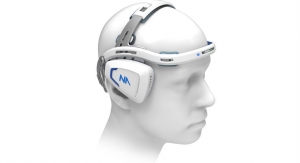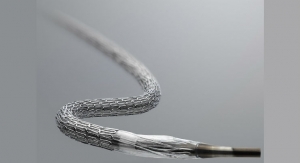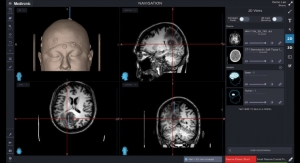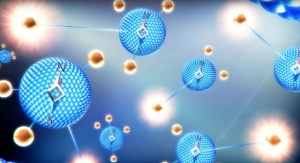Videos
Endovascular Start-up Synchron Appoints Chairman
Endovascular Start-up Synchron Appoints Chairman
Company to launch with acquisition of the SmartStent Stentrode neural interface technology.
By Business Wire04.22.16
Synchron, a new U.S. based company developing minimally invasive neuromoducation technologies, has appointed neurovascular device industry veteran Martin Dieck as chairman.
Currently focused on the development of the world’s first endovascular neural interface, Synchron is acquiring SmartStent Pty. Ltd., an Australian company with IP rights to Stentrode™, an implantable technology that can interpret signals from the brain. The technology is being developed for patients with paralysis, as well as a range of brain pathologies, and to date has received more than $4 million in grant funding from the U.S. Defense Advanced Research Projects Agency (DARPA), among other sources.
“It is very rewarding to be invited to assist develop this promising innovative technology,” said Dieck. “Over the past 20 years, I have been fortunate to work alongside many top physicians and engineers to develop some of the most transformative technologies in the neurovascular space. I look forward to working with the Synchron team to establish this new technology platform which may ultimately benefit a wide range of patients.”
Dieck was most recently co-founder and CEO of Lazarus Effect Inc., a medical device company that developed a vascular interventional device designed to treat acute ischemic stroke. The company was purchased by Medtronic plc for $100 million in September 2015. Previously, Dieck headed up Nfocus Neuromedical Inc., a developer of neurovascular intravascular devices, and Concentric Medical Inc., which developed a device to restore blood flow in patient’s brain vessels following ischemic stroke.
Two of the co-founders of SmartStent will also join Dieck on the Synchron board: Neurologist Thomas J. Oxley, M.D. Ph.D., of Mount Sinai Hospital in New York, N.Y., and interventional cardiologist Rahul Sharma, M.D., of Cedars-Sinai Health System in Los Angeles, Calif.
Oxley is the lead author of a paper published in Nature Biotechnology in February 2016, which demonstrated that Stentrode is capable of detecting brain signals. Building on the paper’s findings, it is the intent of Synchron to develop this platform for detection and treatment of a range of neurological conditions.
The core technology, Stentrode, was spun out of collaborative research between DARPA and the University of Melbourne, and originally pursued by SmartStent, which is being acquired by Synchron. President Obama recently highlighted the potential benefit of this technology in a video on Discovery’s Science Channel.
Watch Dr. Oxley explain the Stentrode technology in the video below:
Synchron is currently preparing for its first in-human clinical trials of Stentrode.
The world’s first endovascular neural interface, Stentrode is a proprietary new technology platform that is able to interpret brain activity through minimally invasive endovascular access. The tiny device is implanted next to the brain’s motor cortex using procedures commonly used for neurovascular stent implantation, without having to perform open brain surgery. The platform is currently being developed for patients with paralysis to facilitate control of external devices such as robotic limbs, computers and exoskeletons by translating brain activity. Future applications may include the potential to diagnose and treat a range of brain pathologies, such as epilepsy, that currently have only limited or highly invasive surgical options.
Based in Silicon Valley (California), Synchron develops minimally invasive neuromoducation technology solutions, and is perfecting the world’s first endovascular neural interface, the Stentrode. Development of the Stentrode technology has been previously supported through a grant from DARPA.
Currently focused on the development of the world’s first endovascular neural interface, Synchron is acquiring SmartStent Pty. Ltd., an Australian company with IP rights to Stentrode™, an implantable technology that can interpret signals from the brain. The technology is being developed for patients with paralysis, as well as a range of brain pathologies, and to date has received more than $4 million in grant funding from the U.S. Defense Advanced Research Projects Agency (DARPA), among other sources.
“It is very rewarding to be invited to assist develop this promising innovative technology,” said Dieck. “Over the past 20 years, I have been fortunate to work alongside many top physicians and engineers to develop some of the most transformative technologies in the neurovascular space. I look forward to working with the Synchron team to establish this new technology platform which may ultimately benefit a wide range of patients.”
Dieck was most recently co-founder and CEO of Lazarus Effect Inc., a medical device company that developed a vascular interventional device designed to treat acute ischemic stroke. The company was purchased by Medtronic plc for $100 million in September 2015. Previously, Dieck headed up Nfocus Neuromedical Inc., a developer of neurovascular intravascular devices, and Concentric Medical Inc., which developed a device to restore blood flow in patient’s brain vessels following ischemic stroke.
Two of the co-founders of SmartStent will also join Dieck on the Synchron board: Neurologist Thomas J. Oxley, M.D. Ph.D., of Mount Sinai Hospital in New York, N.Y., and interventional cardiologist Rahul Sharma, M.D., of Cedars-Sinai Health System in Los Angeles, Calif.
Oxley is the lead author of a paper published in Nature Biotechnology in February 2016, which demonstrated that Stentrode is capable of detecting brain signals. Building on the paper’s findings, it is the intent of Synchron to develop this platform for detection and treatment of a range of neurological conditions.
The core technology, Stentrode, was spun out of collaborative research between DARPA and the University of Melbourne, and originally pursued by SmartStent, which is being acquired by Synchron. President Obama recently highlighted the potential benefit of this technology in a video on Discovery’s Science Channel.
Watch Dr. Oxley explain the Stentrode technology in the video below:
Synchron is currently preparing for its first in-human clinical trials of Stentrode.
The world’s first endovascular neural interface, Stentrode is a proprietary new technology platform that is able to interpret brain activity through minimally invasive endovascular access. The tiny device is implanted next to the brain’s motor cortex using procedures commonly used for neurovascular stent implantation, without having to perform open brain surgery. The platform is currently being developed for patients with paralysis to facilitate control of external devices such as robotic limbs, computers and exoskeletons by translating brain activity. Future applications may include the potential to diagnose and treat a range of brain pathologies, such as epilepsy, that currently have only limited or highly invasive surgical options.
Based in Silicon Valley (California), Synchron develops minimally invasive neuromoducation technology solutions, and is perfecting the world’s first endovascular neural interface, the Stentrode. Development of the Stentrode technology has been previously supported through a grant from DARPA.
Related Searches:



























